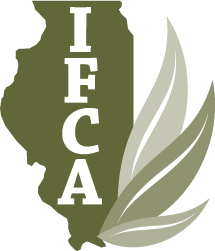During a rushed harvest, don’t skip these nitrogen steps
Harvest will likely be rushed this year as a result of the planting delays this spring. This means a shorter window in which to gather crops and prepare fields for next year. With this time crunch, your customers may overlook or forget some basic best practices for fall operations. In the case of nitrogen application, these best practices can make the difference between a boosted 2020 yield and loss of this valuable input.
With that in mind, if time, soil conditions and weather allow for fall applications on your customers’ fields, now is a good time to review best practices to maximize nitrogen-related success.
Fall application best practices
When it comes to fall application, there are several do’s and don’ts to consider.
Do’s
Apply only anhydrous ammonia or manure fertilizer in fall.
Apply after Oct. 1, but only if temperatures are cool enough.
Apply to soil that is 50 F 4 inches below the surface. You want soil that is 50 F, or lower, but not freezing.
For clay soils, apply half the nitrogen in fall and half in spring.
Don’ts
Don’t apply if it’s raining.
Don’t apply to sandy soils or in fields prone to spring flooding.
Don’t apply if the ground is frozen; the nutrients won’t absorb.
Most of all, be sure to apply a nitrogen stabilizer
Click Here to read more.
With that in mind, if time, soil conditions and weather allow for fall applications on your customers’ fields, now is a good time to review best practices to maximize nitrogen-related success.
Fall application best practices
When it comes to fall application, there are several do’s and don’ts to consider.
Do’s
Apply only anhydrous ammonia or manure fertilizer in fall.
Apply after Oct. 1, but only if temperatures are cool enough.
Apply to soil that is 50 F 4 inches below the surface. You want soil that is 50 F, or lower, but not freezing.
For clay soils, apply half the nitrogen in fall and half in spring.
Don’ts
Don’t apply if it’s raining.
Don’t apply to sandy soils or in fields prone to spring flooding.
Don’t apply if the ground is frozen; the nutrients won’t absorb.
Most of all, be sure to apply a nitrogen stabilizer
Click Here to read more.
